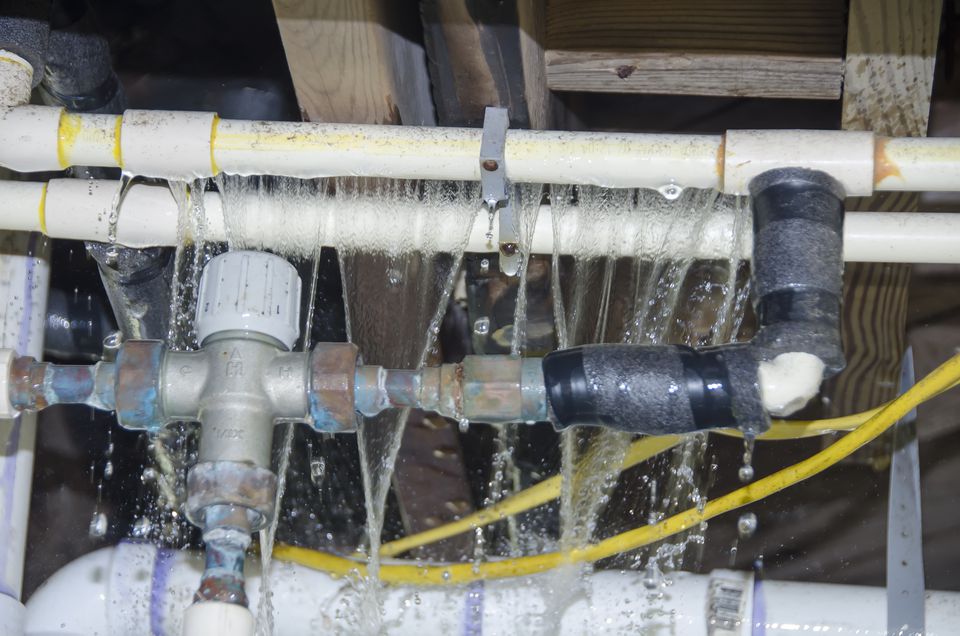When temperatures plummet in winter, the risk of your pipes freezing skyrockets. Frozen pipes can cause tremendous damage to buildings, and represent one of the most common, and expensive, causes of property damage to homes in Maine. Costing easily $5,000 or more on average according to the Insurance Institute for Business and Home Safety, it’s a no-brainer to do everything you can to prevent frozen pipes! Luckily, there are some very simple efforts you can make to prevent frigid temperatures from reaching your pipes and causing them to burst.
The pipes at most risk in your home are the ones in unheated spaces such as basements, attics, crawl spaces, and garages. However, even the pipes under cabinets on exterior walls can freeze, so don’t forget those areas. Research conducted by the Building Research Council shows that the “temperature alert threshold” is 20° F, for uninsulated pipes running through unheated spaces.

Pipe insulation costs as little as 50-cents per linear foot at your local home store, so it’s pretty affordable as home improvements go! Compared to the loss of your valuables, the cost of your insurance deductible, and the inconvenience of extensive repairs, there’s no reason not to insulate any vulnerable pipes.
Drafts let in a lot of cold air and drop the temperatures in an interior area considerably. Not only wasting energy and increasing your heating expenses, they can definitely cause frozen pipes! Seal cracks, gaps and openings around windows and doors, at sill plates and the foundation, and anywhere else you find cold drafts.
Always keep garage doors closed, and be sure no windows are open or drafty in your attic and basement areas.
Remember going to your grandmother’s in the winter and seeing the kitchen cabinet doors open under the sink? While this may seem an old-fashioned precaution, your grandmother was on to something! Keeping the doors open under any plumbing housed in cabinetry on exterior walls allows warmer air to circulate, and goes a long way to preventing frozen pipes.
Running water through a pipe, even at a slow trickle, helps prevent the pipes from freezing. Simply let the cold water drip slightly from any faucet in a worrisome location.
Turns out large temperature swings – turning the thermostat way back when you’re not home, then cranking it up when you are – doesn’t actually save on energy costs. It’s better to leave your thermostat at nearly the same temperature to maintain a consistent heat so your system doesn’t have to work so hard. It will also prevent the temperature in colder areas of the house from dropping to dangerous levels.
If you are planning to be away for an extended time during the cold weather, leave your thermostat no lower than 55° F.
Beyond the obvious flow of water flooding your home, there are telltale signs that you have frozen pipes. If you turn on a faucet this winter and only a trickle comes out, you may have a frozen pipe. If you suspect your pipes have frozen, be very careful when thawing them out. If the pipe has burst somewhere in the line, the water will come flowing out into your home once it starts thawing.
Turn off your water at the main shutoff valve, typically located near the water meter and/or where your water line enters the house. There are steps to thawing frozen pipes, such as applying heat with a heating pad, hair dryer or space heater, but they can be very dangerous for a homeowner to attempt. NEVER use a blowtorch or open flame to thaw pipes! Not only can you start a fire, but you can cause additional damage to your plumbing. If you are at all unsure or uncomfortable, call a licensed plumber immediately to prevent further damage to your home.
At 207 Plumbing & Heating, we provide 24/7 emergency services and can help you with any plumbing issue. Just give us a call at 207-653-0979.